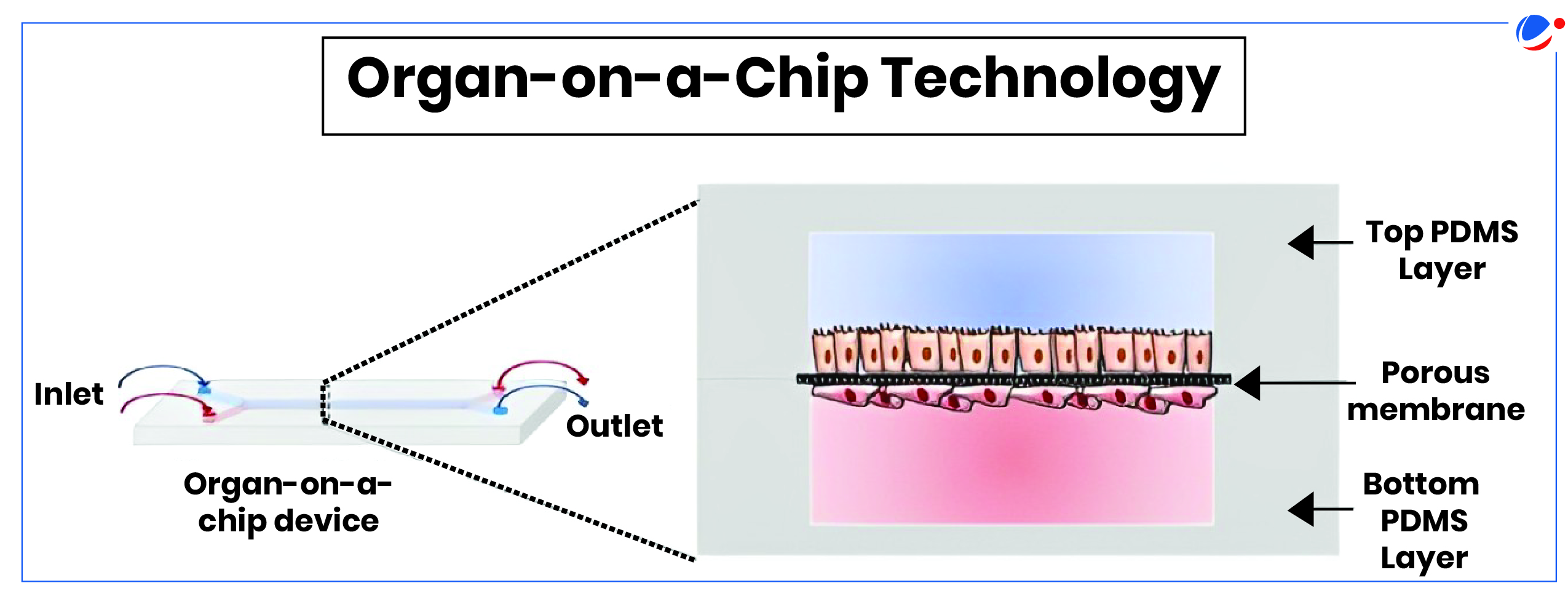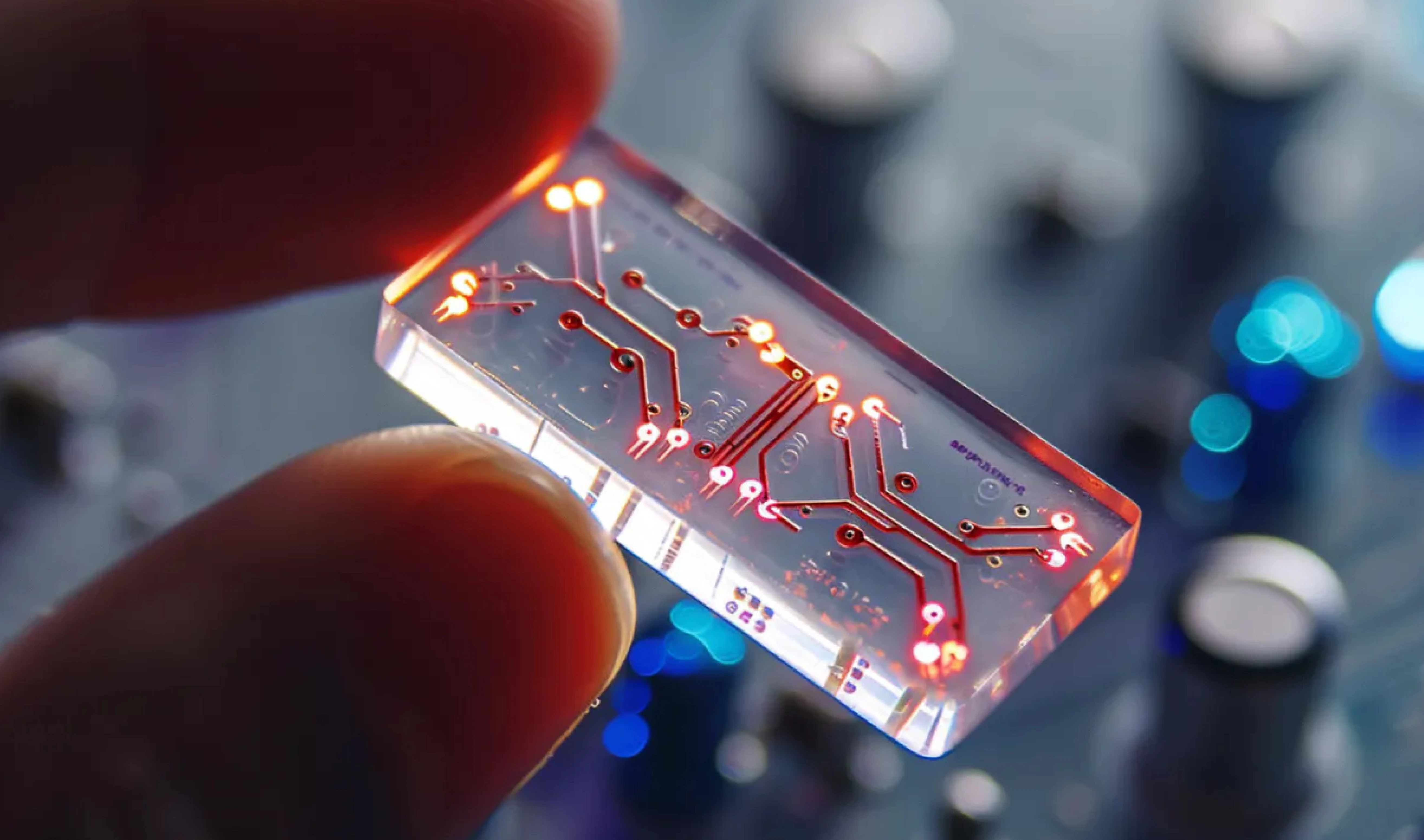Why in the News?
Organ-on-chip technology, expected to be worth around $1.4 billion by 2032, could boost BioE3 (Biotechnology for Economy, Environment, and Employment) goal to personalize medicine.
Organ-on-Chip (OoC) Technology
Other New Approach Methods:
|
- OoC is one of the human-relevant 3D culture models which, also known as 'New Approach Methods' (NAMs).
- 3D culture system allows researchers to recreate human organs and diseases in one dish.
- It holds great promise for many applications such as regenerative medicine, drug discovery, precision medicine, and cancer research, and gene expression studies.
- 3D culture system allows researchers to recreate human organs and diseases in one dish.
- OoC is a micro-scale system used for mimicking the human body environment. They use microfluidics, along with cells, to imitate the physiological and mechanical conditions experienced in the body.
- They can control the movement and behaviour of materials and cells by using channels, chambers, membranes, etc. The goal for organ-on-a-chip is to develop human tissue models for disease modelling and drug testing.
- Researchers first reported the usefulness of an organ-on-chip model in a 2010 study.

Organ-on-a-Chip device has four key components
- Microfluidics: This uses tiny channels to deliver cells to specific locations and manage fluid flow during the culture process.
- It is known for being small, integrated, and automated.
- Living Cell Tissues: This part involves arranging specific cell types in the right places to mimic tissue functions.
- Stimulation or Drug Delivery: Certain tissues need signals, like electrical or chemical stimuli, to create a realistic environment for tissue growth.
- These signals can also be used in drug testing.
- Sensing: Sensors in the device track and measure data, either through built-in sensors or visual monitoring systems to evaluate the chip's function.
How does organ-on-a-chip technology work?
- Cells are placed on chip and allowed to grow into 3D structures with help of a polymer that resemble real tissue in human body.
- It uses tiny fluid channels that simulate blood flow, oxygen delivery, nutrient transport etc. to create miniature models of biological organs (lung, heart etc.) on a chip-sized device.
- To create a more realistic organ model, different types of cells can be combined in layers, forming a 3D structure that better represents complexity of real organs.
Advantages of OoC technology
- Precision Therapeutics: By simulating a patient's unique tissue environment, researchers can test how specific drugs will affect that individual/Group, leading to more precise treatment plans.
- Precision Medicine takes into account individual variability in genes, environment, and lifestyle for each person.
- Earlier it was known as Personalized medicine However, there was concern that word "personalized" could be misinterpreted to imply that treatments and preventions are being developed uniquely for each individual
- Precision Medicine takes into account individual variability in genes, environment, and lifestyle for each person.
- Drug efficacy testing: OoC provide more accurate predictions compared to traditional methods such as animal testing or in vitro cell cultures. E.g. Liver-on-Chip for Hepatitis Treatment.
- Accurate Human Physiology Simulation: OOC models replicate the structure and function of human organs more accurately than traditional 2D cell cultures.
- Ethical Alternative to Animal Testing: Since OOC devices use human cells and tissues, they can reduce the need for animal testing.
- Complex Organ Interactions: OOC systems can link multiple organ models together, simulating how different organs interact within body.
- Research on disease mechanisms: By mimicking human organ functions and creating disease models on these chips, researchers can gain a better understanding of disease progression, cellular behavior, and potential therapeutic targets.
- In COVID-19 research, lung-on-chip systems were used to study how SARS-CoV-2 virus infects human lung tissue.
Challenges with Organ on Chip Technology
- Technical Complexity and Standardization: Reproducing Complex Organ Functions and lack of universally accepted protocols and materials for creating OOC devices.
- Integration of Multi-Organ Systems: Accurately scaling different organ systems and ensuring proper communication between them is technically difficult.
- Ethical and Legal Issues: Particularly related to data privacy, intellectual property, and use of patient-derived cells.
- Other challenges: Lack of Regulatory Framework, Limited Immune System Modelling, High Cost etc.
Steps taken for development of Precision Medicine and Organ on chip technology:
|
Conclusion
While organ-on-chip technology holds great promise for advancing drug discovery, disease research, and personalized medicine, several challenges must be overcome before it can achieve widespread adoption. With continued investment and innovation, organ-on-chip systems could play transformative role in future healthcare solutions.





